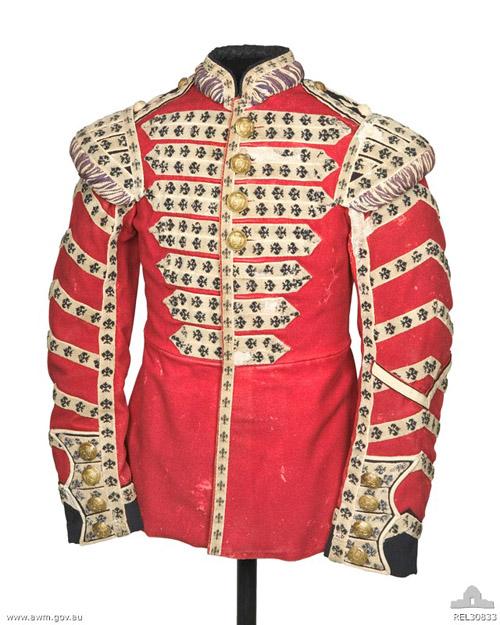Conservation of a Grenadier Guards Tunic – REL30833
Background
The tunic came into the collection in a curious and roundabout way . The War Memorial was approached by a Canberra family who had, for donation, a number of pieces of early Lighthorse Regiment (NSW Lancers) equipment. The equipment had belonged to and been worn by a past family member. The pieces were brought into the Military Heraldry and Technology section and examined by Curatorial Staff. The last piece on the table to be examined was contained in a very old plastic bag. On opening the bag a very battered red tunic appeared. The tunic which emerged was a Grenadier Guard Drummers tunic in bright scarlet wool trimmed with fluer-de-lys Drummer’s lace and brass buttons. Anecdotally, the story was that the family member had been one of the Lighthorse contingent which marched in Queen Victoria’s Diamond Jubilee parade in London in the English summer of 1897. At some point during this time the tunic was souvenired and returned to Australia with the troop. Though badly damaged, the tunic’s story swayed the curators and it was accepted into the Collection.
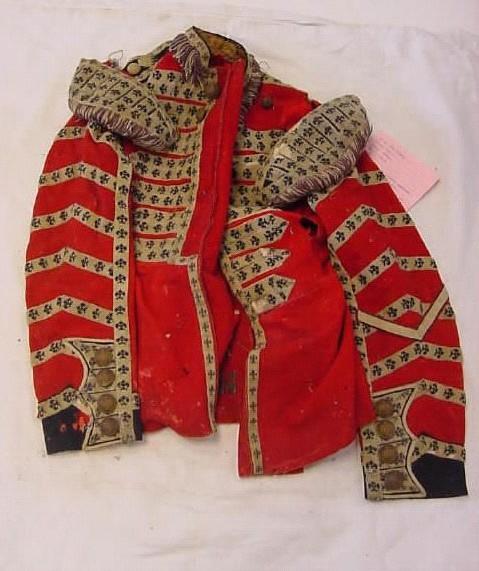
Description
The tunic is made from scarlet superfine wool with blue wool cuffs. The tunic has shoulder straps and wings. The tunic fronts are trimmed with seven bars of double Drummers Lace (braid) and fastened with seven large regimental buttons. There is additional lace on the back, skirt, sleeves and on both the shoulder straps and wings. There are embroidered grenade ciphers on the shoulder straps, and additional buttons on the back, shoulders and sleeve cuffs. The collar is edged with narrow Drummer’s Lace and has blue and white worsted fringing.
At some point in the tunic’s past it had been extensively damaged by both carpet beetle larvae and cloths moths, resulting in numerous areas of fabric loss across all panels and additional damage to the Drummer’s Lace. Overall the tunic was shedding insect frass (droppings) and was very grubby and liquid stained. The shoulder wings were detached and the body lining had been removed. Several of the buttons were missing as were the brass belt hooks. Parts of the collar fringing had become detached and one cipher had been gnawed by insects down to the underlying stump support.
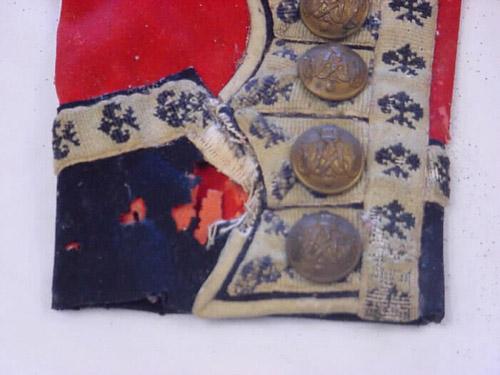
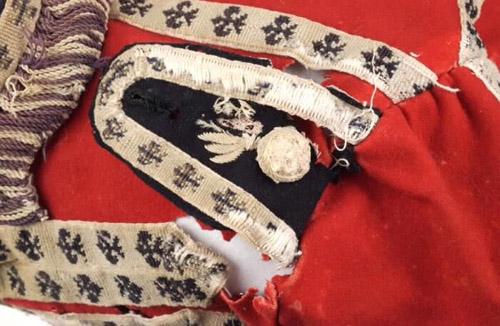
Treatment
The tunic was fully documented and photographed before the treatment began. Documentation included diagrams and detailed information on the materials, construction, and condition of the tunic prior to and during conservation. As this is the only tunic of this type in the collection, further advice on construction and materials history was sought from the Curator’s of the Guards Museum in London.
The tunic was tested for colour fastness and then washed to remove accumulated grime and staining. The Drummer’s lace was strengthened using a tapestry filling stitch technique. The fabric losses were supported and filled with a fine red wool cloth of a similar weight and structure to the original. The wings were treated and reattached at the appropriate point on the shoulders. A lining of cotton calico was cut to the pattern of the tunic and refitted with instructions supplied by the Guards Museum. The buttons were removed before washing and treated to remove tarnish before being reattached to the tunic.
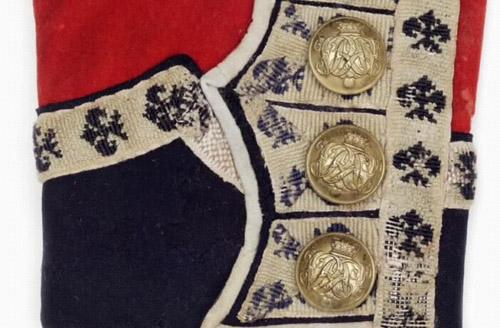
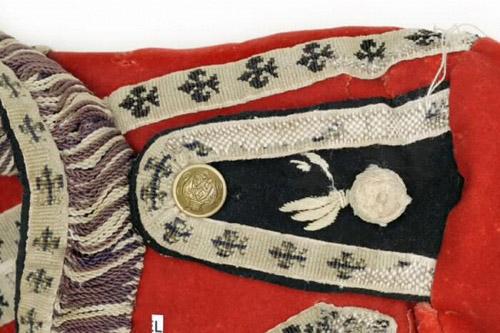
Results
The collection now has an example of a Victorian Grenadier Guardsman’s tunic which is known to have been at Queen Victoria’s Diamond Jubilee. It adds to the eclectic collection of souvenired objects.
